(Skip to bullet points (best for students))

Born: 1866
Died: 1944
Summary of Wassily Kandinsky
As a prominent figure in the abstract art movement, Wassily Kandinsky effectively connected colour and form in order to engage the viewer’s eyes, ears, and emotions. He thought that total abstraction allowed for the greatest and most sublime expressions of the soul, and that replicating the natural world just took too long. His work communicated his inner experience, expressing his strong belief that his paintings should convey a universal sense of spirituality to all people. He created a visual language that loosely connected to the outside world, but said volumes about his artist’s interior experience.
His vocabulary shifted over three phases, starting with his more realistic paintings (with their heavenly overtones) moving to his paintings that had more euphoric and operatic vibes, and concluding with his latter works which focused on simple geometric and biomorphic flat planes of colour. Following WWII, Kandinsky’s paintings and ideas inspired a number of artists. This included the Abstract Expressionists, who were taught by Kandinsky’s students from the Bauhaus.
Above all, Kandinsky’s work was incredibly spiritual. He attempted to put across deep spirituality and the range of human emotion via a universal visual language of abstract shapes and colours that transcend cultural and physical boundaries.
To communicate the “inner necessity” and transmit universal human emotions and ideas, Kandinsky found that painting in a non-objective, abstract style worked best. He regarded himself as a prophet, with the responsibility to convey the idea of bettering society to the rest of the world.
Kandinsky saw music as the highest kind of non-objective art, since instrumentalists can capture the minds of their listeners by performing just notes. His goal was to create paintings without objects that were spiritually rich that addressed feelings and emotions via a sense of oneness.
Biography of Wassily Kandinsky
Childhood
Born in Moscow in 1866 to mixed-race, well-to-do parents, Wassily Wassilyevich Kandinsky grew up in a world influenced by art and culture. He’s the descendant of people from different places in Russia and Mongolia. His father was from Mongolia, his mother was born in Moscow, and his grandmother spoke German and lived in Latvia.
Kandinsky’s formative years were spent in Odessa, an eclectic and heterogeneous metropolis in the South of Ukraine. Kandinsky exhibited a unique ability to be excited by music, language, and colour from a young age. He started off with remarkable creative ability, which was fostered through piano and cello lessons, as well as painting classes. His father enrolled him in these things in an effort to help him succeed.
Kandinsky was a late bloomer in the arts, and despite having his first taste of art when he was young, he didn’t begin painting until he was 30. He studied law, ethnography, and economics at Moscow University, where he entered in 1886.
Even if he is academically focused on the law, Kandinsky’s fascination with the meaning of colour and its effect on the human psyche has grown stronger in Moscow. The 1889 trip into northwest Russia known as Vologda prompted Kandinsky’s interest in folk art, which he carried over the course of his career. Upon obtaining his law degree in 1892, he started teaching at the institution.
Early Life
Although Kandinsky was a very successful instructor, he quit his legal practise in 1896 to join the Munich Art Academy. He initially studied under Anton Azbe in Munich for two years before transferring to the Academy of Fine Arts, where he trained under Franz von Stuck. As Azbe’s school exposed him to the likes of Alexei Jawlensky, who in turn brought Kandinsky to Munich’s avant-garde artists, his friend group revealed to him conspirators such as Jawlensky. “Phalanx” an artist’s organisation whose members rejected the conventional thinking of art institutions, was formed in 1901 by Kandinsky along with three other young artists.
The organisation Phalanx established with Kandinsky included an art school as well as an exhibition venue. A student in one of his lectures, Gabriele Munter, later became his partner for 15 years; it was at that time that he first met and got to know her. Kandinsky got familiar with the Expressionist movement while travelling with Munter from 1903 to 1909. They visited Europe and northern Africa together. The distinctive way he designs clothing reflects the many inspirations he encountered while he was on the road.
Kandinsky produced his most famous picture, Der Blaue Reiter, during this time of change (1903). Even in his early work, it was clear that his interest in the broken figure-ground relationships and the use of colour to convey emotion instead of appearances would become key elements of his mature style. The Neue Kunstlervereinigung Munchen (NKVM) was founded in 1909, and it aimed to become a comfortable space for artists who had rejected traditional artistic institutions and methodologies. Felix was one of the original members of this organisation, which sought to be a home for avant-garde artists whose methods were too extreme for the times. His paintings became more and more surreal as he refined his technique.
He started labelling his compositions with titles like Improvisation, Composition, and Impression to demonstrate their separation from the external world, and he consistently used labels like that for the remainder of his career.
Mid Life
When Kandinsky’s picture was rejected from the annual NKVM exhibition, he retaliated by starting the “Der Blaue Reiter” (The Blue Rider) with Franz Marc and a group of eight other Expressionist artists, including Franz Marc, Jawlensky, and August Macke. Though each artist’s approach was different, they all shared the conviction that modern art may lead to spiritual experiences, and Kandinsky saw these ideas reflected in his work.
Even though the name of the group derives from Kandinsky’s picture “Der Blaue Reiter” Kandinsky and Marc didn’t really choose it as the group’s name. Kandinsky liked horses, whereas Marc preferred to ride them, and both artists appreciated the symbolism of the rider. Despite its short lifespan, the group produced an anthology and three exhibitions. Kandinsky’s belief that the artist is a spiritual being who communicates and is affected by line, colour, and composition is initially stated in his theoretical work on abstraction, Concerning the Spiritual in Art (1911).
He experimented with both figurative and abstract painting at this time, although he grew more drawn to non-objective painting. This work, Composition VII (1913), was a breakthrough in his artistic use of intense, emotive colours and detailed, complex patterns. Der Blaue Reiter (Blue Rider) dissolved with the start of World War I in 1914, yet the highly influential German Expressionist style arose in spite of the short life of the group.
Kandinsky had to leave Russia because Germany was preparing to attack it. He returned to Moscow in early 1916, when he and Munter broke up after he spent almost two and a half years in Switzerland and Sweden. In Moscow, he married Nina Andreevskaia, the daughter of a Czarist colonel. She was young when they met and courted. Upon his arrival in Moscow, he not only familiarised himself with the works of Vladimir Tatlin and Kazimir Malevich and many other avant-garde giants, but he also shared a building with Aleksander Rodchenko and met Naum Gabo, Lyubov Popova, and Varvara Stepanova, among others.
Following the Bolshevik takeover of private wealth in Russia in 1917, Kandinsky’s plans to create a school and studio were scrapped, and he instead assisted the government in establishing cultural programmes and institutions. Although he was involved in the establishment of many new formal organisations, he felt even more disconnected from the front-runners. His quest for meaning in art came into conflict with the nascent government, and he quarrelled with the government-supported artists.
Kandinsky agreed to teach in the Weimar Bauhaus in Germany after the invitation from Walter Gropius in 1921. He lived in Berlin with his wife, having gained German citizenship in 1928. Kandinsky changed his view of art from focusing on movement and rhythm to the use of simple geometric shapes. His unique style emphasised squares, triangles, and particularly circles and triangles. He published Point and Line to Plane, a book on “science of painting.” in 1926. His work shifted from emotional expressiveness to well-structured composition in his post-war paintings and writings.
Late Life
When the Nazis shut down his school, Kandinsky fled to France, where he spent the rest of his life. He and his wife Nina moved into a small apartment in the Parisian suburb of Neuilly-sur-Seine in 1939, which earned them French citizenship. He had started experimenting with more organic forms while in France, since they contrasted greatly with the harsh geometric patterns he used when working with the Bauhaus movement. Despite his last year of work, Kandinsky’s final output declined and found little appreciation, as the Parisian avant-garde began to prefer the referential imagery of Cubism and Surrealism above Kandinsky’s unique artistic contributions.
Kandinsky maintained his method and made refinements, engaging in all of his old themes and techniques, all while distancing himself from the latest movements and keeping himself hidden from his colleagues. In his later works, he combined the emotive and open-ended elements of his earlier works (done in the early 1910s) with more methodical design elements, including elements from the Bauhaus school, and the organic and biomorphic forms he found influential in surrealist artists such as Joan Miró and Jean Arp.
Solomon R. Guggenheim and other American collectors enthusiastically collected his abstract work, despite the Nazis confiscating 57 of his paintings during their “degenerate art” blitz in 1937. His contributions to the Guggenheim Museum’s agenda, which was to support contemporary and innovative art, had a tremendous impact. The Guggenheim Museum views Kandinsky as its “patron saint of the Guggenheim.” with more than 150 works in the museum’s collection. He passed away peacefully at his cabin in the woods of Vermont in December 1944.
Kandinsky’s creative and theoretical work had a massive impact on many forms of modern art, especially Abstract Expressionism, which itself had many iterations, including Color Field Painting. His late biomorphic work had a big effect on Arshile Gorky, who created the New York School’s aesthetic via the development of a non-objective style.
Famous Art by Wassily Kandinsky
Der Blaue Reiter (The Blue Rider)
1903

This groundbreaking painting, which depicts a lone rider galloping over a landscape, is deceptively simple, yet it marked a turning point in Kandinsky’s evolving technique. He displayed an obvious aesthetic relationship to Impressionists like Claude Monet in this painting, notably in the contrasts of light and shade on the sun-dappled hillside. The person on horseback’s ambiguous shape, depicted in a mixture of hues that almost merge together, foreshadows his interest in abstraction. The horse and rider subject resurfaced in several of his subsequent works.
Moscow I (Red Square)
1916

The relocation to Moscow in 1914 triggered a period of melancholy for Kandinsky, who painted very little in his first year back. In a letter to his former friend, Munter, when he picked up his paintbrush again in 1916, he declared his intention to paint a painting of Moscow. Despite continuing to develop his abstraction, he portrayed the city’s landmarks and caught the essence of the city in this painting. Kandinsky painted the landmarks in a circular pattern, as if he were standing in the middle of Red Square, turning in a circle, and catching them all spinning around him.
Composition VIII
1926

Composition VIII’s logical, geometric arrangement is the polar opposite of Composition VII’s operatic composition (1913). This piece, painted when Kandinsky was teaching at the Bauhaus, shows how he combined aspects from Suprematism, Constructivism, and the school’s own ethos. He achieved the flat planes of colour and the clean, linear clarity evident in this piece by integrating features of all three movements. In contrast to colour, form organised the painting in a dynamic equilibrium that pulses throughout the canvas. Kandinsky’s refined beliefs on modern, non-objective painting are expressed in this piece, notably the relevance of forms like triangles, circles, and the checkerboard.
BULLET POINTED (SUMMARISED)
Best for Students and a Huge Time Saver
- As a prominent figure in the abstract art movement, Wassily Kandinsky effectively connected colour and form in order to engage the viewer’s eyes, ears, and emotions.
- He thought that total abstraction allowed for the greatest and most sublime expressions of the soul, and that replicating the natural world just took too long.
- His work communicated his inner experience, expressing his strong belief that his paintings should convey a universal sense of spirituality to all people.
- He created a visual language that loosely connected to the outside world, but said volumes about his artist’s interior experience.His vocabulary shifted over three phases, starting with his more realistic paintings (with their heavenly overtones) moving to his paintings that had more euphoric and operatic vibes, and concluding with his latter works which focused on simple geometric and biomorphic flat planes of colour.
- Following WWII, Kandinsky’s paintings and ideas inspired a number of artists.
- This included the Abstract Expressionists, who were taught by Kandinsky’s students from the Bauhaus.Above all, Kandinsky’s work was incredibly spiritual.
- He attempted to put across deep spirituality and the range of human emotion via a universal visual language of abstract shapes and colours that transcend cultural and physical boundaries.To communicate the “inner necessity” and transmit universal human emotions and ideas, Kandinsky found that painting in a non-objective, abstract style worked best.
- He regarded himself as a prophet, with the responsibility to convey the idea of bettering society to the rest of the world.Kandinsky saw music as the highest kind of non-objective art, since instrumentalists can capture the minds of their listeners by performing just notes.
- His goal was to create paintings without objects that were spiritually rich that addressed feelings and emotions via a sense of oneness.
Information Citations
En.wikipedia.org, https://en.wikipedia.org/.
Recommend0 recommendationsPublished in Artists
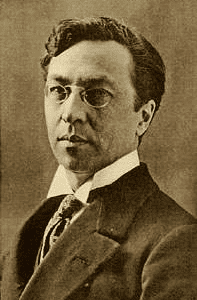

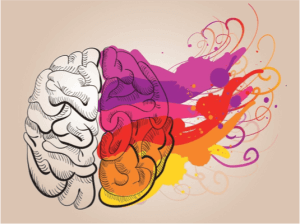
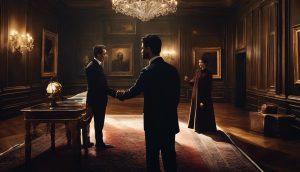
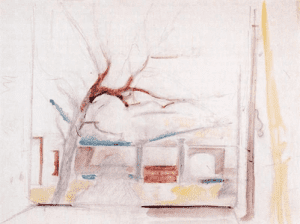

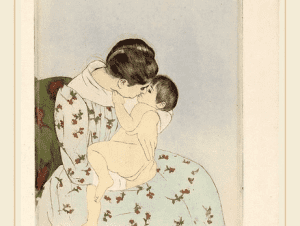
Responses